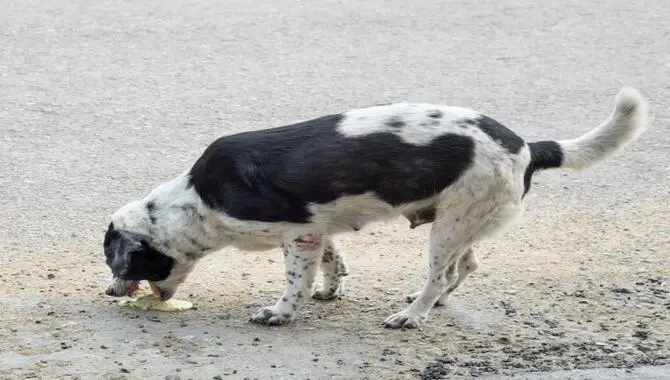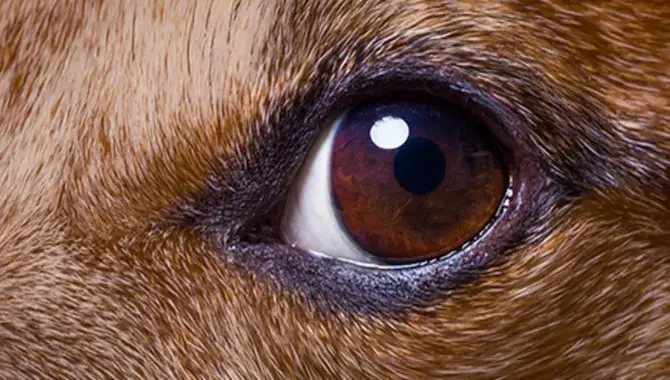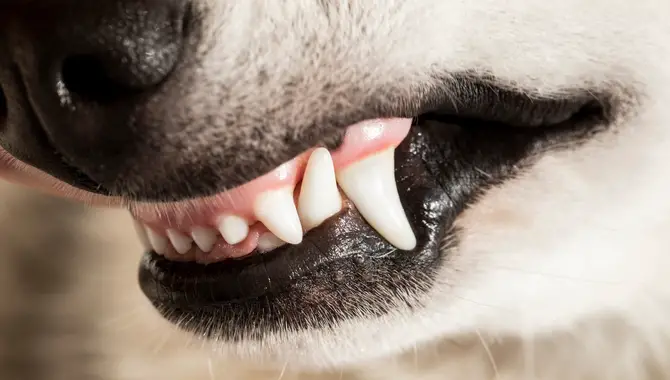Recognizing the early signs of illness and distress in your dog can help you take action to address them. These include changes in behavior, such as increased or decreased activity, increased drinking, increased or loss of appetite, and sudden weight gain or loss.
Another sign to look for is a change in appearance.Your dog’s coat may become duller, lose its shine, or appear worn. Their eyes may become redder or have a dull sheen to them. However, it can be hard for the pet owner to tell when a dog is sick. That’s because dogs do not always show signs of sickness when ill.
But there are some behaviors that your dog may exhibit if they are unwell. These behaviors help you determine what is wrong with your pup and how to take care of it. We’ll discuss the 11 recognize signs of illness or distress in your dog.

How Do Dogs Act When They Are Sick?

When your dog suffers from an illness, it can be easy to miss the signs. But there are a few behaviors that you can watch for to help recognize when your dog is unwell. Dogs’ most common signs of illness include decreased activity and lethargy.
Some dogs may begin sleeping more than usual or hiding away from the world. They may also stop eating or vomiting more than usual. Other signs of illness in dogs include increased neediness and clinginess.
These behaviors may vary from dog to dog but usually indicate heightened emotions or attention. Dogs may become more affectionate, trying to get as close to their owners as possible or even begging for attention.
They may also show signs of anxiety, such as attempts to leave or escape, compulsive licking and grooming, reduced activity, destructive behavior, or self-injuring. Knowing the signs of an illness can help you recognize signs of distress quickly and address them before they escalate.
11 Ways To Recognize Signs Of Illness Or Distress In Your Dog

Recognizing the symptoms of an illness or a medical condition in your dog can ensure its well-being. These symptoms can vary depending on the condition, so it’s important to take note of any changes in your dog’s behavior, such as lethargy, loss of appetite, or decreased activity.
It’s also important to understand what these symptoms could mean for your dog’s health and to seek veterinary care if necessary. Here are some ways you can recognize the signs of illness or distress in your dog:
1. Vomiting Or Diarrhea

Well,Vomiting and diarrhea are the most common signs of ill health in dogs. Vomiting or diarrhea can be caused by various factors, such as diet changes. Foreign objects, viral or bacterial infection, or parvovirus in puppies. Suppose your dog is experiencing persistent vomiting or diarrhea for more than hours. In that case, it is recommended to visit a veterinarian and take a fresh stool sample to identify the cause of the behavior.
Additionally, coughing, vomiting, and diarrhea can indicate a developing allergy, an infection, or heart disease in dogs. An anxious dog may also exhibit symptoms of vomiting, diarrhea, compulsive licking, self-injury, diarrhea/vomiting, reduced activity, and destructive behavior. If you notice these signs in your dog, it would be best to consult a vet for advice.
2. Increased Or Decreased Urination

Dogs may suddenly start to urinate excessively or have difficulty urinating. This may be a sign of diabetes, kidney disease, or bladder stones. Dogs experiencing difficulty urinating may strain to try to urinate, have a decrease in urine volume, or vomit afterward.
If you notice your dog frequently urinating or has blood in the urine, immediately take them to the vet. Otherwise, watch for other changes in behavior that could point to a serious health issue.
Persistent increases or decreases in urine output could indicate a urinary tract problem or bladder stones. If you notice any of these changes in your dog, take action and get them checked by a veterinarian as soon as possible.
3. Loss Of Appetite

Various issues, such as dental disease, fever, pain, or stress, can cause loss of appetite in dogs. If your dog is eating for less than 24 hours, it is important to check in with the veterinarian. Investigations may reveal the cause of the loss of appetite and help determine treatment options.
Meanwhile, signs of depression in dogs that may occur alongside a loss of appetite include weight loss. Lethargy, reduced activity, and refusing water or treats. Cats may sometimes lose their appetite due to illness or stress.
Therefore, it is important to regularly assess your pet’s health and take steps to prevent any complications from occurring. If a dog stops eating or a cat begins refusing food, it could develop fatty liver due to its lack of nutrition.
4. Change In Drinking Habits

A loss of appetite, vomiting, diarrhea or other symptoms could indicate that your dog is ill. If you notice an increase or decrease in water intake, this might indicate illness. If your pet drinks less, add more water bowls around the house or flavor the water with chicken broth.
Whether your dog drinks more, check to see if they are also urinating more and take a urine sample if possible. Additionally, monitor your dog’s behavior for additional symptoms, such as lack of appetite, abdominal pain, vomiting, diarrhea, lameness, or straining to urinate. If you notice these signs and others that are not typical for your pet, take them to the veterinarian for a check-up.
5. Unexplained Weight Loss Or Gain

Unexplained weight loss or gain in dogs can be a sign of a health issue. If your dog is struggling to move while sleeping or has difficulty rising from lying down, it could be suffering from arthritis, disc disease, hip or spine issues, or a disease such as Lyme disease.
Mild to life-threatening stomach issues, such as vomiting or diarrhea, could stem from diet changes, foreign objects in the stomach, or viruses. If you notice changes in your dog’s behavior and appetite over weeks or months, recognize that it could indicate an underlying health problem and seek veterinary help.
Instead of focusing on weight loss alone, it is important to closely examine your furry friend’s health and conduct routine tests to ensure they are healthy.
6. Changes In Personality

Dogs get ill and go through physical pain from time to time. These situations can cause changes in their behavior, such as lethargy, withdrawing from social interaction, and showing signs of aggression or clinginess. When dogs are ill or in distress, they may growl at you when approaching a particular area of the body that may be causing them pain.
Mental health issues in dogs can range from simple anxiety to more severe disorders such as obsessive-compulsive disorder (OCD) and depression. Dogs affected by major life changes, sicknesses, or genetics may be more likely to develop mental health problems. It is important to recognize your dog’s symptoms of illness or physical pain and take steps to help them feel better.
7. Coughing, Wheezing, Or Trouble Breathing

Coughing, wheezing, and trouble breathing are common signs of respiratory problems in dogs. These can range from the common cold to severe conditions such as canine flu, kennel cough, or heart disease. Coughing can indicate a tracheal collapse in small dog breeds.
Vomiting and diarrhea can be attributed to parasites, food allergies, intolerances, or stress. Shortness of breath, respiratory distress, labored breathing, or coughing could indicate heartworm disease or another serious health issue. If you notice any of these signs in your dog, take him to the vet immediately for diagnosis and treatment.
8. Hair Loss/Itchy Skin

Hair loss and itchy skin are common signs of illness or distress in dogs. Fleas, ticks, mange mites, and ear mites are common causes of hair loss and itchy skin. Other possible causes of hair loss and itchy skin include food allergies, physical injuries, and disease.
Reducing your dog’s exposure to these allergens can help relieve the signs of hair loss and itching. If you suspect your dog is suffering from an illness or being treated for a disease, you can look for other signs of distress, such as a change in appetite or behavior. When petting your dog, always be gentle and patient – never force them to pet you back or play when they’re not feeling well.
9. Stiffness/Lameness/Difficulty Rising

Stiffness, lameness, and difficulty with rising in dogs can be signs of illness or distress, such as hip or spine arthritis, disc disease, ruptured ligaments, or hip dysplasia. While there are many possible causes of these symptoms, it is more common for large breeds such as German Shepherds, Labradors, and Golden Retrievers to be affected.
Other signs of illness in dogs may include panting, lethargy (fatigue), and vomiting. Anxiety and fear can also be seen in dogs with such conditions, characterized by trembling or pacing around their cages or yards. Other common clinical signs of anxiety and fear include hiding or reducing activity levels.
10. Eye Changes

Pawing or rubbing at the eyes may indicate illness or distress in dogs. It is common for dogs to paw or rub their eyes when experiencing any pain or discomfort. If your dog shows this behavior, it could indicate a more serious health issue. This behavior could be caused by disease, injury, or other conditions.
In some cases, dogs may exhibit this behavior if they have been groomed or sought attention. Dogs with cloudy or red eyes may also indicate they are experiencing vision problems. Glaucoma is a possible cause of eye changes in dogs; if you notice your dog having any of these signs, check it out as soon as possible.
11. Pale Gums

Pale gums in dogs can indicate anemia, shock, or other serious medical conditions. If your dog has pale gums, is lethargic, weak, or has trouble breathing, this can be a medical emergency. In such cases, it’s important to seek veterinary help immediately. Look for signs of dental disease, such as inflamed or black patches on the gums.
Reddened or swollen gums may indicate gum disease, particularly when associated with bad breath. Additionally, if your dog is experiencing any skin condition (e.g., licking), this could be a sign of illness. So closely examine your dog’s oral health regularly and watch for signs of trouble.
This will help ensure that you can recognize the disease early and take the necessary action to treat and care for your dog Output: Pale gums in dogs can be a sign of anemia, shock, or other serious medical conditions.
How To Take Care Of Your Dog If They Are Ill Or Distressed?

You should immediately seek veterinary care if you notice your dog acting strangely or displaying signs of illness or distress. Lifting a dog can be stressful on its body and may cause pain and injury, so it’s important to support the dog’s neck and back when lifting them. If a dog appears to be in pain, contact a vet for help.
Consider arranging for daycare or dog-sitting if the dog is too stressed to care for themselves. This will help the dog relax and regain their ability to self-care, which will help them recover faster.
Be aware of your dog’s self-calming behaviors, like excessive yawning, lip licking, or sneezing, as they try to communicate they are harmless. Self-calming behaviors can indicate illness or distress, so it’s essential to monitor your dog for any signs of distress and act quickly if needed.
Conclusion
Caring for a pet is time-consuming, and it’s easy to forget your responsibilities as a pet owner when you are ill or distracted. Remember to take your dog out for walks, give them medication, and offer plenty of loving attention will help keep your dog healthy and happy during sickness.
You can also learn how to recognize signs of illness or distress in your dog and how to take care of them. Knowing the signs of illness or distress is important if you are concerned about your dog’s health.
By recognizing these signs, you can take appropriate action to help your dog recover as quickly and safely as possible. We have provided a list of the most common recognize signs of illness or distress in your dog, along with tips on how to identify and address them. If your dog is experiencing any of these signs, consult a professional immediately. Doing so can ensure your dog receives the best care and recovery possible.
Frequently Asked Questions
What Are Some Common Signs Of Illness In Dogs?
Dogs’ most common signs of illness include jaundice, vomiting, and diarrhea. Additionally, anxiety, compulsive licking and grooming, self-injury, reduced activity, and destructive behavior can also indicate health issues. So if you notice any of these symptoms in your dog, always consult your veterinarian to rule out any underlying health issue.
How Can You Tell If A Dog Is In Distress?
Identifying signs of distress in your dog can be a critical first step in helping to ensure their well-being. Some common indicators of distress include excessive panting, droopy eyes, hiding or avoiding interactions with other dogs, and aggressive behavior. These may be symptoms of a more severe condition such as heatstroke or illness, but they should always be taken seriously and treated immediately by a professional.
What Are The Three Warning Signs That Your Dog Needs Help?
Three warning signs indicate that your dog needs help. These include behavioral changes, such as loss of appetite, excessive sleeping, and lethargy; changes in appearance, such as a loss of fur or unusual wounds; and physical symptoms, such as difficulty breathing or a sudden decrease in activity level. It is important to note that these signs do not always indicate a medical problem and must be evaluated by a professional.
How Do I Know My Dog Needs To Go To The Emergency Vet?
It is important to recognize your dog’s signals when they need a visit to the emergency clinic. These can include changes in appetite, lethargy, or sudden loss of interest in activities. If you notice any of these things, scheduling an appointment with the vet immediately is best.
What Are The Signs Of Illness Or Distress In My Dog?
Let’s look deeper at your dog’s signs of illness or distress. They can be physical, behavioral, or both. Physical signs of illness or distress include increased appetite, lethargy, and decreased activity levels. Behavioral signs of illness or distress include abnormal behaviors such as excessive barking, hyperactivity, and nervousness. Please take note of these signs and do what you can to help your dog when he is not feeling well.

Aquarium passion is all about connecting with the aquatic life and providing education to the public on the importance of these creatures. We showcase a wide variety of marine life through our exhibits as well as working with schools to provide unique learning opportunities for students of all ages.









